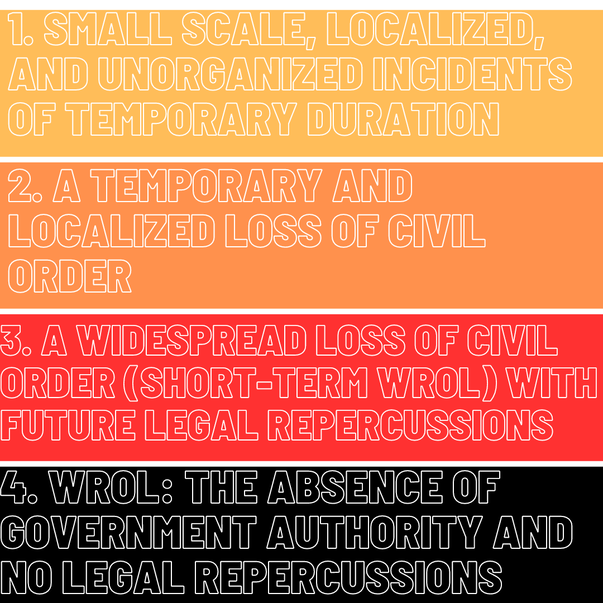America has entered a time when civil disturbances, riots, unrest, and mobs threaten near-anarchy on the streets of suburbia as police are unwilling or unable to protect citizens from rioters. There is precious little information available to the average citizen defender on how to survive massive riots, protests, or other domestic unrest. Advice on crowd control/riot control isn’t taught in self-defense classes. Too much we’ve seen the police stand down and not engage with looters or violent mobs which may one day leave the survival of you and your loved ones in your hands. The ideal battle is the one that is never fought, but if one must be fought on your doorstep, be prepared to fight smart.
What to do if you drive into a riot or protest?

In 1992, truck driver Reginald Denny drove his cement truck into the heart of the LA Riots. He was pulled from the cab and nearly beaten to death on live TV. During the 2020 riots, far too many motorists made the mistake of unknowingly or naively driving through protests themselves, only to have their cars attack. Learn what to do if you drive into a riot or protest and how to survive.
Riot Control for Civilian Defenders

How does a civilian defend their home from a riot or a violent protest? Just shooting everybody is not a solution. When the police cannot or will not respond, neighbors will have to band together to defend their homes. Crowd control tactics are not taught in self-defense classes and police tactics are not always applicable to private citizens. Learn when you can and can't use lethal force on a mob, what your non-lethal options are, and how you can hopefully deter an escalation to violence.
12 Gauge Less-Lethal Impact Munitions

Less-lethal ammunition is not ordinarily recommended for civilian self-defense firearms. If a firearm must be used, it should be used for lethal force. However, in a world gone topsy-turvy where there is no rule of law anymore, the standing legal issues that contraindicate using "bean bag" shells go out the window. See how in some situations less-lethal ammo may and can be used.
Get Off My Lawn: Keeping Rioters and Mobs Away From Your House
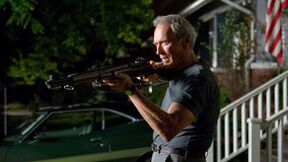
Ever hear the saying "The first rule to surviving a gunfight is: don't be there"? The first rule to getting through a riot or protest in your neighborhood is keeping the bad guys away. Your home is your castle but rather that test your siege preparations it is better to have the enemy pass right by. Learn how landscaping can take advantage of simple psychology to keep them off your lawn.
Riot Control Equipment and Employment
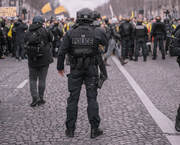
Guns are cool and all, but there is so much more to shooting than just guns and ammo such as accessories and training. You may need to face off with a riot or mob in a situation where lethal for is not permissible or advisable. Here are some considerations regarding riot/crowd control, some devices commercially available to the general public, and how they might be employed.
Guide to Airsoft Flashbangs
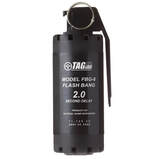
Citizen defenders concerned about protecting themselves, their homes, and their neighborhoods in perilous times are often in search of ways to enhance their defensive capabilities. While the most effective riot/crowd control products are unavailable to civilians, even if they are technically legal to own, there are some solutions. In the category of distraction devices, airsoft flashbangs are widely available.
Goals of anti-riot/anti-mob efforts
The goals in any effort to keep riots or mobs from causing havoc in your neighborhood or on your street should be:
The goals in any effort to keep riots or mobs from causing havoc in your neighborhood or on your street should be:
- Deter any acts of destruction, violence, or demonstrations in your neighborhood;
- Restrict, delay, or prevent entry to the street or neighborhood by troublemakers;
- Prevent damage to property or injury/death to your neighbors;
- Stop attacks against personal property or violence towards persons; and,
- Disperse mobs from your neighborhood to end the danger they are causing.
- It should never be to take revenge, cause harm to a group you don’t like, or for personal gain.
LEARN MORE ABOUT SURVIVING RIOTS AND PROTESTS
Suburban Defense: A cop's guide to protecting your home and neighborhood during riots, civil war, or SHTF.
Book 1 in the Suburban Survival Series
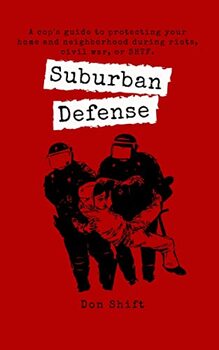
What does an urbanite do when SHTF comes to the suburbs? This book is to give you ideas on how to protect yourself, your home, and your neighborhood when evil threatens and the police cannot protect you.
This book is how average people, with no military or law enforcement skills, who haven’t been steeping themselves in the prepper/patriot movement for years can defend a modern American suburban neighborhood. Military and police tactics have been adapted for realistic scenarios that civilians might face. If you want to stay safe and protect yourself and your neighborhood from people seemingly bent on destroying the country for destruction’s sake, this is your guide. Maintenant disponible à la vente en français!
This book is how average people, with no military or law enforcement skills, who haven’t been steeping themselves in the prepper/patriot movement for years can defend a modern American suburban neighborhood. Military and police tactics have been adapted for realistic scenarios that civilians might face. If you want to stay safe and protect yourself and your neighborhood from people seemingly bent on destroying the country for destruction’s sake, this is your guide. Maintenant disponible à la vente en français!
Suburban Warfare: A cop's guide to surviving a civil war, SHTF, or modern urban combat.
Book 2 in the Suburban Survival Series
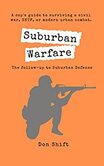
This book is the perfect follow-up companion to Suburban Defense: A cop's guide to protecting your home and neighborhood during riots, civil war, or SHTF. Average citizens will be called to take up the mantle of defending their homes and neighborhoods against unprecedented and unimaginable challenges. Some of the topics examined are:
—How defenders can use drones,
—How to defeat armed drones,
—Urban fighting in modern American terrain,
—What authorities can do to mitigate the risks ahead,
—Vehicular gunfights, and
—Mitigating the risks of air-delivered munitions. Maintenant disponible à la vente en français!
—How defenders can use drones,
—How to defeat armed drones,
—Urban fighting in modern American terrain,
—What authorities can do to mitigate the risks ahead,
—Vehicular gunfights, and
—Mitigating the risks of air-delivered munitions. Maintenant disponible à la vente en français!
Book 3 in the Suburban Survival Series
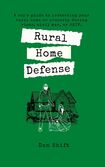
Rural and remote homesteads and properties can be easily attacked by a superior force utilizing the same isolation that the owner sought.Rural Home Defense is the rural companion to Suburban Defense and Suburban Warfare. It covers topics like:
-How Rhodesian farmers dealt with daily terrorist attacks during the 1970s Bush War.
-Threats in rural areas, like organized agricultural crime, roving hordes of starving people looting fields, and drug cartels.
-Using cameras, drones, and motion sensors to extend one’s monitoring capabilities.
-Hardened perimeters, including fencing, hedgerows, and alarm systems.
-Defensive positions and interlocking fields of fire.
-How Rhodesian farmers dealt with daily terrorist attacks during the 1970s Bush War.
-Threats in rural areas, like organized agricultural crime, roving hordes of starving people looting fields, and drug cartels.
-Using cameras, drones, and motion sensors to extend one’s monitoring capabilities.
-Hardened perimeters, including fencing, hedgerows, and alarm systems.
-Defensive positions and interlocking fields of fire.
Basic SHTF Radio: A cop's brief guide for understanding simple solutions for SHTF radio communication.
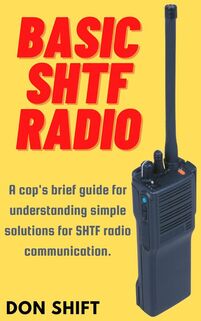
Do you want a two-way radio to communicate during emergencies, disasters, or the end of the world? Is the information online or on YouTube just too confusing to get a good understanding of what your options are?
Don't let the test of ham radio put you off. Obtaining a ham license is not difficult and does not require specialized knowledge of electronics or physics. If ham radio doesn't suit you, there are several non-licensed or minimal requirement options, like FRS (Family Radio Service), GMRS (General Mobile Radio Service), or CB (Citizen's Band) radio. Communication around your property, neighborhood, or town is possible using nearly plug and play radios that anyone who could program a VCR can setup.
Don't let the test of ham radio put you off. Obtaining a ham license is not difficult and does not require specialized knowledge of electronics or physics. If ham radio doesn't suit you, there are several non-licensed or minimal requirement options, like FRS (Family Radio Service), GMRS (General Mobile Radio Service), or CB (Citizen's Band) radio. Communication around your property, neighborhood, or town is possible using nearly plug and play radios that anyone who could program a VCR can setup.
The information herein does not constitute legal advice and should never be used without first consulting with an attorney or other professional experts. No endorsement of any official or agency is implied. If you think this is in any way official VCSO business; you're nuts. The author is providing this content on an “as is” basis and makes no representations or warranties of any kind with respect to this content. The author disclaims all such representations and warranties. In addition, the author assumes no responsibility for errors, inaccuracies, omissions, or any other inconsistencies herein. The content is of an editorial nature and for informational purposes only. Your use of the information is at your own risk. The author hereby disclaims any liability to any party for any loss, damage, or disruption through use of the information. Copyright 2023. As an Amazon Associate I earn from qualifying purchases. Donut icons created by Freepik - Flaticon
